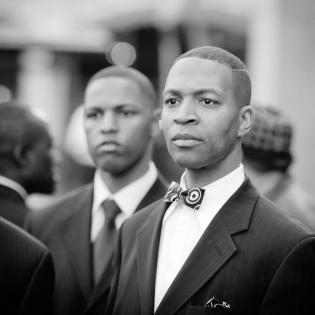Pay It Forward
In this lesson, students define serial reciprocity as "paying it forward." They compare the concept of paying it forward (serial reciprocity) with the work of Dr. Martin Luther King, Jr. They brainstorm issues and campaigns they can address to make an impact that ripples forward as a result of their influence.
The learners will:
- define serial reciprocity (paying it forward).
- design and implement a campaign to raise awareness of a chosen issue of importance.
YouTube clip from the film Pay it Forward of the assignment to change the world: https://www.youtube.com/watch?v=N0HTneOLrEc
- service: to provide a community or organization with something that it needs
- donate: to give or present something, especially to a charitable organization or other good cause
- paying it forward: the concept of a good deed being passed on to others
- social activism: an intentional action to bring about social, political, economic, or environmental change. It can take a wide range of forms from writing letters to newspapers or politicians, political campaigning, economic activism such as boycotts or preferentially patronizing businesses, rallies, street marches, strikes, sit-ins and hunger strikes.
Pay it Forward (123 minutes) with Kevin Spacey, Haley Joel Osment, and Helen Hunt. DVD (PG-13) Warner Home Video, 2001. AISN: B00005B4BI
Instructions
Anticipatory Set:
Ask the young people to recall some slogans on posters or bumper stickers or memes they have seen that raise awareness about an issue or challenge others to do something good (related to education, the environment, health, poverty and hunger, world peace, or civil rights). Examples: "Recycle" or "Black Lives Matter." Talk about whether clever sayings or simple statements get their attention more. Ask whether a meme or poster is an effective way to teach others about issues. Why or why not?
Introduce the concept of paying it forward, also known as serial reciprocity. This refers to when people repay the service they receive by passing it on to someone else. It is repaying good deeds done to us by doing good deeds for others - paying it forward rather than paying it back. Optional: watch the video clip in the bibliography above from the movie Pay It Forward. Talk about the potential for this type of spreading kindness. Review Dr. Martin Luther King’s legacy of service and social activism and how it may relate to the concept of paying it forward.
As a group, identify a list of social issues that the young people feel passionate about and wish to address in their community. Such examples may include smoking, drinking, drugs, violence, bullying, racism, discrimination, injustice, dropouts, global issues, illiteracy, and animal extinction. Brainstorm various actions or projects that could address these issues. Such examples may include the following:
- Smoking — Write a letter to policy makers, requesting a ban on smoking in various venues.
- Violence— Generate a survey to students about violence awareness or hold an anti-violence rally.
- Racism — Design a forum that addresses issues of racism.
Invite youth to investigate the issue further to learn more about its origins, causes, and impact on the community.
Brainstorm language for a pledge or slogan that may engage interests and convey a message to a specific audience of their peers.
Make an artistic display of the slogan and advertise it on a poster or meme to influence others.
Philanthropy Framework
-
Strand PHIL.I Definitions of Philanthropy
-
Standard DP 01. Define Philanthropy
-
Benchmark HS.4 Define and give an example of serial reciprocity.
-
-
-
Strand PHIL.II Philanthropy and Civil Society
-
Standard PCS 01. Self, citizenship, and society
-
Benchmark HS.2 Discuss and give examples of why some humans will sacrifice for the benefit of unknown others.
-
-
-
Strand PHIL.III Philanthropy and the Individual
-
Standard PI 01. Reasons for Individual Philanthropy
-
Benchmark HS.1 Define and give examples of motivations for giving and serving.
-
-
-
Strand PHIL.IV Volunteering and Service
-
Standard VS 01. Needs Assessment
-
Benchmark HS.1 Identify a need in the school, local community, state, nation, or world.
-
Benchmark HS.2 Research the need in the school, neighborhood, local community, state, nation, or world.
-
-
Standard VS 02. Service and Learning
-
Benchmark HS.1 Select a service project based on interests, abilities, and research.
-
Benchmark HS.2 Identify specific learning objectives from the academic core curriculum that are being applied in the service-learning project.
-
-
Standard VS 03. Providing Service
-
Benchmark HS.1 Provide a needed service.
-
Benchmark HS.2 Describe the goals of the project and their impact.
-
-
Standard VS 05. Integrating the Service Experience into Learning
-
Benchmark HS.2 Evaluate progress on the service-learning project before, during, and after the project.
-
Benchmark HS.3 Identify outcomes from the service.
-
-
